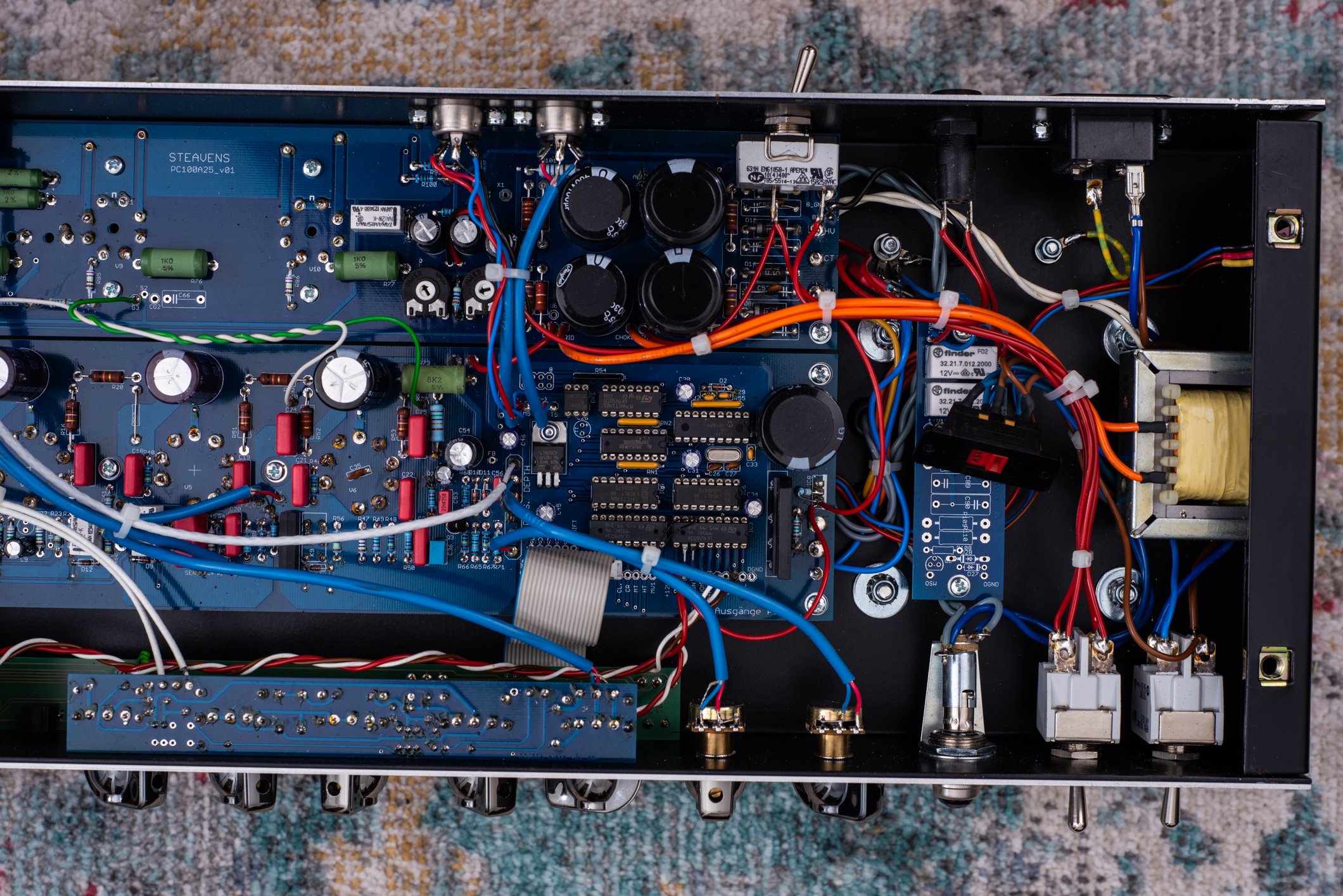2015 Steavens Poundcake 25th Anniversary
Specs
4 Channels
Each channel can access 3 modes using the foot switch in PGM mode or the front panel switches
100w Output
4x 6L6 Power Tubes
6x 12AX7 Preamp tubes
5 Button MIDI footswitch
Can be configured as a standard footswitch - 4 channels plus Master 1 or 2 (forces each channel in “green” mode)
Or two banks in program mode - two settings per channel that recall the setting for FX loop, Mid boost, Master 1 or 2, and Gain Mode (green, orange, or red - even on the clean channel)
$2890 in 2015
Overview
I grabbed this amp from a local musicgoround store, not really knowing exactly what it was. The Poundcake was originally released back in 1992, and is a high gain amp aimed at shred guitar players, and made in Germany. While it never quite attracted the fame and following of other German high gainers from that era (Savage, VH4), it’s a heck of an amp easily on par with them. It is a 4 channel amp design, although there are 50-watt variations with only 3 channels. This amp has been through several versions, all with 4 channels and similar features, but with additional switching and voicing options. It’s hard to identify when the Mk II versions started, but these gained mid and gain boost switching. Mk III versions were discontinued by 2009, and had even more complex options as well as a 7-button footswitch to control more features.
This particular Poundcake is a 25th Anniversary model, which is the final iteration of this amp design, and now discontinued (along with all Steavens amps), and was made in 2015. It shares the same 4-channel layout of previous models, with Clean, Crunch, “Meat,” and “Heat” channels. All four channels have a front-pane bright switch which cannot be changed via footswitch. However, each of the 3 gain channels can be set to 3 different modes (Green, Orange, Red) as well as a “Mid” boost which increases upper mids quite drastically for more cut. Combined with the bright switch, this can take the amp into near-Recto territory for high gain sounds, but switching these off and going to Green mode can nail classic rock and early metal tones with ease. The clean channel also benefits from these modes and the mid boost, and has its own separate volume and EQ control. The 3 drive channel share a pair of switchable master volumes, which is great for solo boosting. If I had one major gripe, it’s that all 3 drive channels share the 3-band EQ, which limits your options, but between the modes and switches, it can still cover a lot of ground with a neutral EQ setting. This is resolved by the Thunderstruck 120, which is a similar 4-channel amp with separate EQ’s per channel, but I haven’t had one of those to comment on how similar the channels are.
The most innovative feature is the 5 button MIDI footswitch, which when set to “PGM” mode can store the settings of the amp as they are configured, and the 5th button can switch banks. So for example, button 2 always selects the crunch channel, but you could set it up to be Crunch Green, mid boost off. Then, tap the bank and press button 2 a second time, and you get Crunch Red, mid boost on, fx loop on, master volume 2. This makes it easy to configure several sounds that you like and easily swap between them depending on the situation. If you prefer, the footswitch (or any midi footswitch) can be used a standard mode, which has one button per channel, and the 5th button switches between the two master volumes. However, if using the footswitch in standard mode, each channel always defaults to green mode, and the mid boost does not follow your switching - it’s either always on, or always off. So it makes a lot of sense to stick to the PGM mode on the footswitch for maximum flexibility.
The modes are the biggest difference from the previous Mk III model, which only had a switchable gain boost function. That boost feature is more or less replaced by the ability to switch the modes to higher gain voicings, but some might prefer the simplicity of simply tapping a boost button, rather than having to set up the mode/mids then store it to a button beforehand.
Overall it’s an incredible sounding amp worthy of much more praise than it gets, but it’s a fairly unknown amp in most circles.
Here are pages for the footswitch manual for this amp, as well as the Steavens Thunderstruck model: Manual Pg1 - Manual Pg2 - Manual Pg3





















